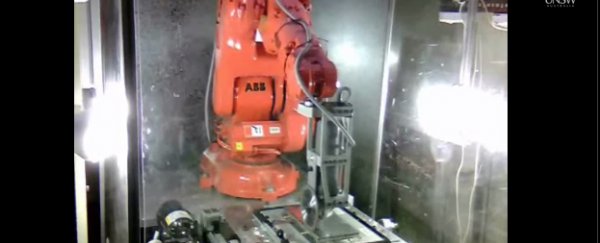Researchers from UNSW Engineering in Sydney have shown that, not only are robots good at helping us recycle, they can also learn to recognise our various electronic products and find quicker ways of breaking them down.
The incredible feat was accomplished by an arm-like industrial robot, which generally perform simple assembly tasks in production lines.
But the UNSW team instead decided to see whether they could program the machine to help us deal with our ever-growing e-waste problem. Right now we're throwing out old computers and phones all the time, but many people working in waste centres don't know how to break these devices down into parts that can be recycled, so they end up on the scrap heap.
And every time a new model comes out, they have to learn how to break down a whole new system.
"There are millions of end-of-life products that we don't know how to disassemble, despite legislation that tells us to do so," said the leader of the project, Sami Kara from UNSW's Life Cycle Engineering Research Group, in a press release.
"The biggest problem is uncertainty – the number of different products coming into e-recycling centres and their condition."
The study proves that robots are a more viable alternative.
"We've successfully proven that you can teach a robot to disassemble LCD screens," said Kara in the release.
"They break one or two but then they learn and they don't make the same mistake again. The idea is to remove the display and printed circuit board without damaging them because the rest can be recycled."
Impressively, even though the robot was slow to dismantle a screen the first time it worked with it, the next time it could do the same thing in minutes.
The engineers have so far tested the robot in the lab, and are now looking to complete industry trials.
Kara believes the same technique could also be used to help break down volatile lithium batteries.
"I'd like to look into using another robot for materials handling purposes," he said in the press release. "You could isolate them in a cubicle, dump the screens in and have them work 24×7 non-stop."
You can watch the robot in action taking apart an LCD screen below (is it just us, or does it actually look frustrated at one point):
Want to do game-changing research? Find out more about studying with the leaders of tomorrow at UNSW Engineering.
Source: UNSW Engineering
